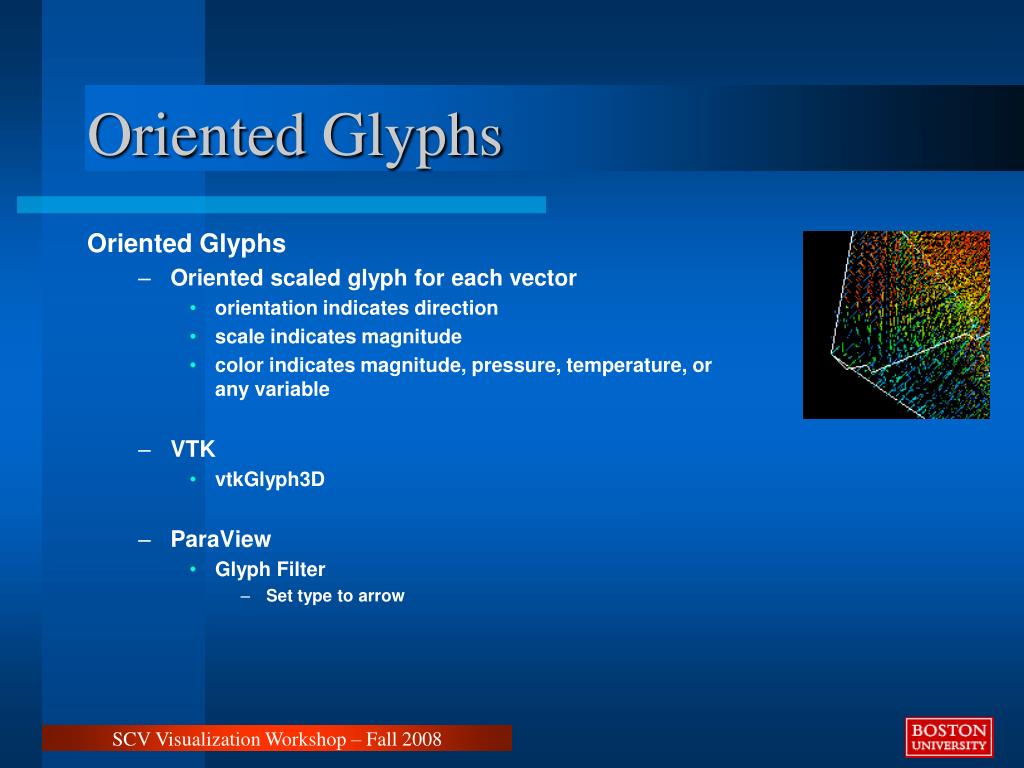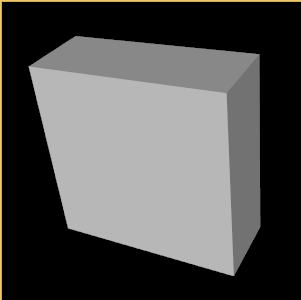

- #Paraview isosurface how to
- #Paraview isosurface plus
- #Paraview isosurface download
- #Paraview isosurface windows
You can use the layout tabs to switch between the rasterized display in Layout #1 and the ray traced display in Layout #2. You should now see the isosurface set rendered using OSPRay. Click the eye icon next to the contour filter to render the isosurface set using OSPRay. Note that the dataset and contour filter are still present in the pipeline browser, but they have been hidden, noted by the grayed-out eye icons to the left of each item. If you do not see the OSPRay option listed, please make sure the pvOSPRay plugin is loaded by following these instructions.Īfter selecting OSPRay a blank display window will open. This will open the ParaView Create View dialog.
#Paraview isosurface plus
Click the plus button "+" next to the "Layout #1" tab above the display window.
#Paraview isosurface how to
If you do not know how to load the OSPRay plugin, please see this step in the walk-through demo for instructions.įirst, open a new display window. The next task in this demo will render the isosurface set from the previous task using the OSPRay ray tracer. You should now see a set of isosurfaces in the display window, similar to the view shown. Once you have all your desired values for the isosurface set, click the "Apply" button in the Properties viewer. For this demo, we will keep it, but if you would like to remove it, highlight it, then click the minus "-" button in the Properties viewer. Notice that the original mid-point isovalue is still present. The range values are added to the Property viewer. We will use the default values for this section, but you are encouraged to experiment with the range and steps options to create different surface sets. Click the range button in the Properties viewer. We will use the range option to create a set of surfaces. The ParaView default contour filter will create a single isosurface at the midpoint value of the first scalar property. Click the "Contour" button in the ParaView toolbar. The first step for this task is to load the ParaView contour filter, which produces isosurfaces. The next task in this demo will produce a set of isosurfaces rendered using both the default rasterizer and the OSPRay ray tracer. The extent of the data is shown as a solid surface, as shown. The selected properties of disk_out_ref.ex2 have now been loaded. Verify that the checkbox is checked, then click "Apply" at the top of the Property viewer. Click the checkbox next to the "V" in the Property viewer to select the velocity property for import. For this demo, we will use the velocity property "V".


We need a vector property in order to demonstrate vector glyphs and streamlines. The ParaView Properties viewer (lower left) lists the properties available in the file. Navigate to the location of your local copy of the file and click "Open".Īt this point, the file metadata has been read, but the file itself is not yet loaded. Click the Open File button in the upper-left corner. See the ParaView workspace, similar to the image to the right.
#Paraview isosurface windows
The images used in this demo are taken from a MacOSX build, but Linux and Windows builds are similar.
#Paraview isosurface download
Please click the link to download (or right-click and select "Save Link As."):įirst, open ParaView. The first task in this demo is to download the dataset to your local machine. Just click the image to open the larger version.


 0 kommentar(er)
0 kommentar(er)
